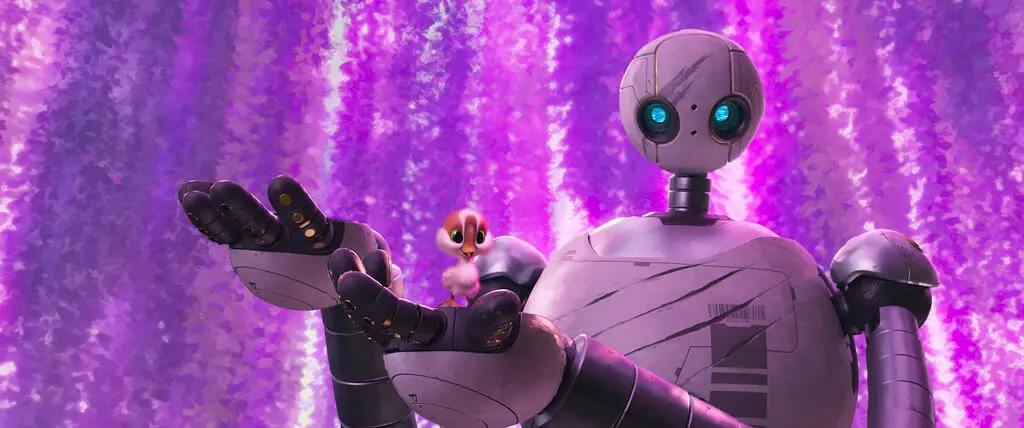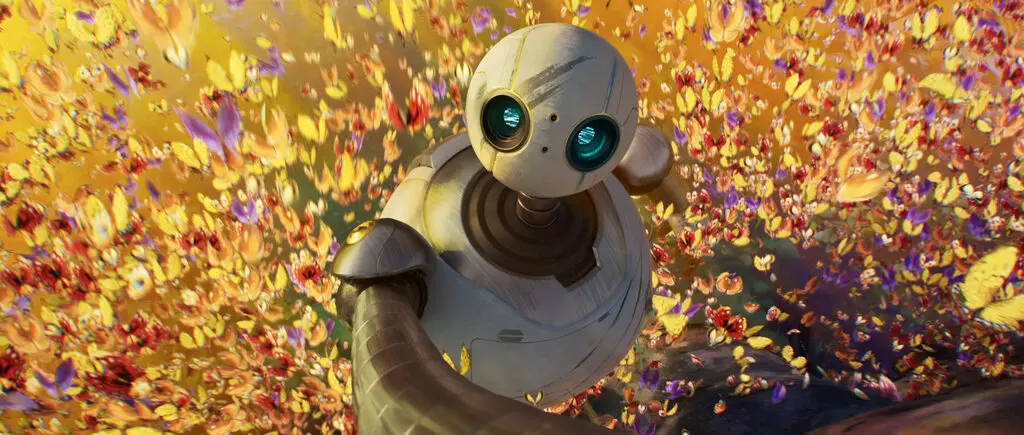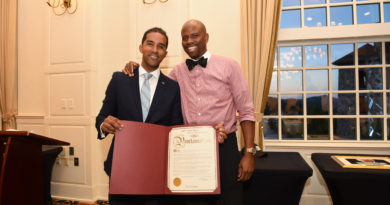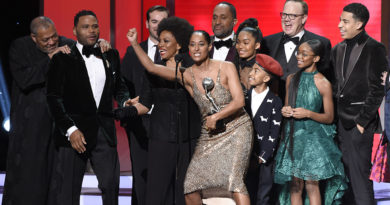‘The Wild Robot’
Chris Sanders’s movie about a robotic assistant and the gosling she raises is defined by dazzling visuals and frank ideas about the circle of life.
Have you ever thought about the many ways animals show emotion? Consider an inquisitive snout wriggling in the air, tails coiled protectively around cubs and ears perky or drooping depending on mood. For creatures who didn’t evolve to walk upright, wearing one’s heart on one’s sleeve is a considerably more anatomical business.
Among the achievements of “The Wild Robot” is a painstaking regard for details like these. Written and directed by Chris Sanders (“How to Train Your Dragon”) and adapted from Peter Brown’s novel, the movie is a dazzling triumph of animation in which you feel the filmmakers’ attention on every frame. In a revivifying turn away from the gag-a-minute, computer-generated extravaganzas clogging up the animated zoological canon, this is a work that cares most about two things: big feelings and great beauty.
That’s not to say that its machine is built entirely of new parts. In some ways, this kid-friendly affair about an interspecies found family even leans into its derivative elements. Roz, the bionic hero of “The Wild Robot,” seems designed to evoke the title character in “The Iron Giant,” sharing that monster’s studying eyes and lanky stature. But rather than outer space, she hails from today’s sinister science-fiction analog: the conglomerate Universal Dynamics, which specializes in robotic digital assistants. Think Alexa in hulking metal form.
The movie opens as Roz (short for Rozzum Unit 7134) accidentally washes off a cargo ship and ashore a wildlife island, where she swiftly begins scouting for a task that satisfies her serve-at-all-costs programming. After wreaking havoc on some fauna, the robotic assistant (voiced by Lupita Nyong’o) stumbles upon a purpose: raising an orphaned, newborn gosling whose kin she accidentally squashed.

Brightbill, as she names him, is on the runty side, and although Roz grows more sociable — at first, she can speak only in a Robotese, which is so stilted it might as well be Middle English — her ward (voiced by Kit Connor, of the Netflix series “Heartstopper”) struggles to master the basics of his pond and sky habitats. Tagging along for the child-rearing is a rascally fox named Fink (Pedro Pascal), who alternates between parenting advice and snide remarks. The impending winter imposes a ticking clock on Brightbill’s training: Should he fail to become airborne before migration time, he will perish in the cold, assuming he’s not eaten first.
The circle of life is visible in “The Wild Robot,” which embraces its harsh realities with daring. On top of Brightbill’s seasonal countdown, his world contains a pecking order of predators and prey, from worms to woodchucks to bears. All of them are struggling to survive, as proved during the blizzard that Roz and Fink battle to rescue hibernating neighbors. Trudging into the storm, the pair manage to save a small Noah’s Ark-worth of nearby dwellers, but come upon at least one burrow where they were too late.
Climate change is also a specter, especially once the story expands to observe a sterile hydroponics production system far from the flourishing ecosystems of the verdant (and notably unnamed) island. We spend most of our time in this Eden, and Sanders seems chiefly concerned with notes of optimism and a message of good will throughout the food chain. But darker moments speak to the tightrope his movie walks between quixotic amity and unsparing truths.

The visuals — not just good, but spectacular — take an anti-verisimilitude approach, and are more evocative for it. Envision a craggy cave engulfed in waves, meadows speckled with Monet-inspired wildflowers and a tree trunk blanketed with fluttering monarchs. These impressionistic landscapes are hardly based on actual environments. Their function is to imbue Roz’s surroundings with wonder and whimsy, eschewing the lifelike in favor of the exquisite.
Beholding all this loveliness, one longs for a version of “The Wild Robot” with less prattling dialogue — not to mention nondescript pop melodies — where the scenery does the singing and the characters inspire swells of uplifting feeling all on their own. Indeed, in the moments where Brightbill and his gander wordlessly soar among feathery clouds, the movie hits its highest peaks.


